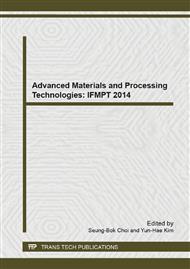p.647
p.651
p.656
p.661
p.669
p.673
p.677
p.681
p.685
Flotation Tests on Ultra-Fine Oolitic Cellophane
Abstract:
The collophane is in oolitic structure, and associates with the gangue intricately; and hence a good concentrate in performance is hardly produced only by rinsing, in order to achieve a full liberation, fine-grinding is needed for the cellophane. Based on the results of both direct and reverse flotation tests, it shows that reverse flotation is effective in the benefication of the apatite to a certain extent. When reverse flotation is used to dress the run-of-mine which contains 26.95%P2O5, a concentrate containing 32.69% P2O5 can be obtained at a recovery of 84.99%.
Info:
Periodical:
Pages:
669-672
Citation:
Online since:
February 2014
Authors:
Keywords:
Price:
Сopyright:
© 2014 Trans Tech Publications Ltd. All Rights Reserved
Share:
Citation:


